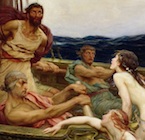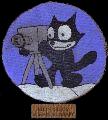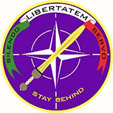AW1Steve
Posts: 14507
Joined: 3/10/2007
From: Mordor Illlinois
Status: offline

|
quote:
ORIGINAL: Leandros
quote:
ORIGINAL: Buckrock
quote:
ORIGINAL: Leandros
Just for asking, what range do you get with this one in the game?
Fred
For my stock game, I have 21 hexes for normal, 27 for extended and 81 for max.
And I noticed in your previous post some of your facts and assumptions seem at odds with what I've read in the USN and Marine records about
the aircraft, which might be why I'm not as optimistic about the F4F-7's historic potential. But rather than try to convince you otherwise, perhaps
the following might help put the aircraft's potential into perspective.....
From chapter I of John B. Lundstroms "The First Team and the Guadalcanal Campaign"......
"If the F4F-4 was a winner, the same could not be said for its photo-reconnaissance version, the F4F-7, being supplied in limited numbers
to carrier utility units for use by the VF squadrons. Basically, the F4F-7 was a stripped-down version of the fixed wing F4F-3 transformed
into a camera-equipped flying fuel tank. Fully loaded with 685 gallons of fuel, the beast topped 10,300 pounds and required special wind
conditions just to get aloft.
Fuel supplanted all the armament and protection, with only a fuel dump system for defense. Even so, top speed reached only 270 knots (310
MPH), slower than its prospective opponents. Estimated range was 3,700 miles; indeed the F4F-7 flew nonstop from coast to coast in 11 hours.
As one expert on the Wildcat quipped, “At one time an endurance of 24 hours was claimed for the airplane, which must have brought great joy
to everyone except the prospective pilot.”
At San Diego Lt. Louis H. Bauer’s VF-2 detachment rendered a scathing verdict of the F4F-7. Its prospective pilots, certain members of the
VF squadrons who had taken aerial photography courses at Quantico, felt little reason to love the photo Wildcat."
One final point to add to Lundstrom's view, I've noticed the Marine air units like VMO-251 and VMD-154 that flew the F4F-7 seemed somewhat
more accepting of the aircraft but that may be that they normally flew it with only the fuselage tank containing fuel. They also tended to use
it only for mapping missions in quieter areas or at least ones that had Allied control of the skies, leaving the serious work for armed recon
aircraft like the PB4Y-1P.
Thank you, Buck, you don't have to convince me of anything, what I am aiming at is just to get facts and
figures out in the day since the question was asked here in the first place. If the local leadership was not up
to making use of its proper potential or felt they had no need for it, they were the best to judge in that. That
said, the story smell a little of what I have seen in so many other controversies regarding warplanes, that I am
not surprised that the verdict turned out the way it did. This was a special plane configuration that had to be
used in a special way - by specialists.
If i should go on with this it wouldn't be to convince anybody that the decision was wrong, but rather to show what
it could have done. Probably did, too. As an example, with a "normal" gross weight, 8.200 lbs., it would still have
more than 3.5 times as much fuel as the "fighting" version of the F4F.
A practical question I would like to have clarified is if it at all could have taken off from a carrier with its
specified MTOW - which you state is 10.300 lbs. - my memory say 10.200 but I happily accept your correction.
Unfortunately, I have found no graphs on this. I have graphs for a "gross" weight of 8.200 lbs. with compensation
for runway length and headwinds.
As you well know, discussions and comparisons of aircraft are often difficult because the same parameters are rarely
used, or found, on the types to be compared. Typical is your own remark that max. speed for the "-7" on max weight
was only 310 mph. - that is only marginally slower than the "standard" version. At what altitude was this? What
was its max. speed with two "normal" drop-tanks? I dare say it was no more. Does that mean it wasn't usable with
drop-tanks? Just to indicate the complexity of what we are doing.
Did any Japanese long-range photo-recce planes have a higher speed in '42? Were the Japanese scouts not successful?
Was a PBY-5 better off if intercepted? Sorry, i wasn't supposed to get into that.... .... ....
Fred
P.S.: And just to have said it, this is not the only plane that needed a headwind to get off the ground in a MTOW
configuration (depending on the runway length, of course). Luckily for the Navy guys they could usually cater for
this quite easily, without the help of the weather Gods, by turning the ship into the wind. They usually did,
anyway. I think it unnecessary to say that it was never meant for "armed recon".
I'm afraid that the geezer in me is required to say that if by only building 27 airframes (most likely more than they needed) this makes it a "crummy airplane" than the famous SR-71 (also a specialized RECON plane) must also be regarded as "junk". After all they only built 32. Perhaps we'd like to rethink the "not very good because they didn't buy very many" comment?  
|
 Printable Version
Printable Version





















 ...
... 





 New Messages
New Messages No New Messages
No New Messages Hot Topic w/ New Messages
Hot Topic w/ New Messages Hot Topic w/o New Messages
Hot Topic w/o New Messages Locked w/ New Messages
Locked w/ New Messages Locked w/o New Messages
Locked w/o New Messages Post New Thread
Post New Thread